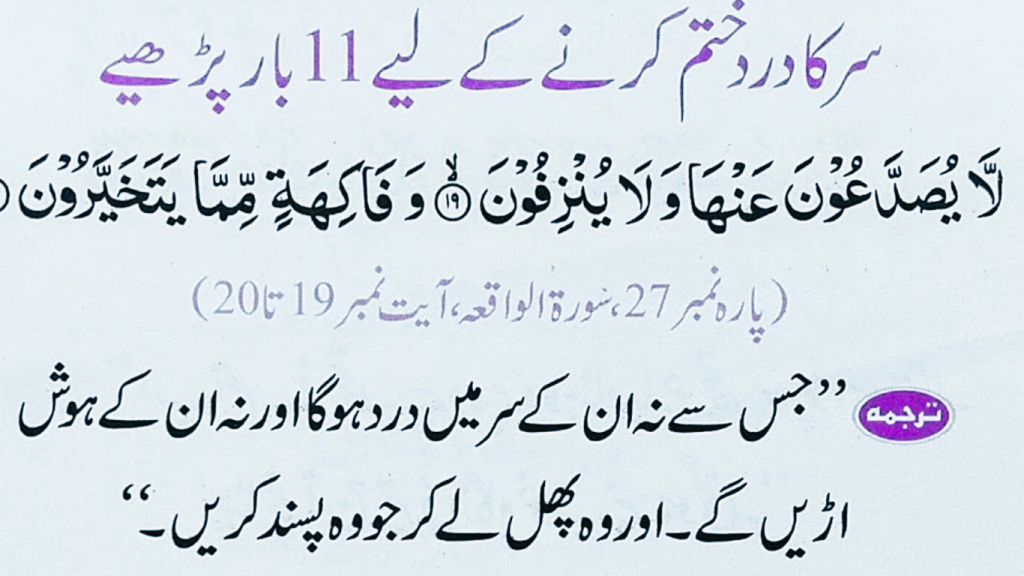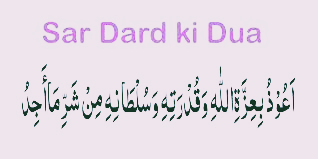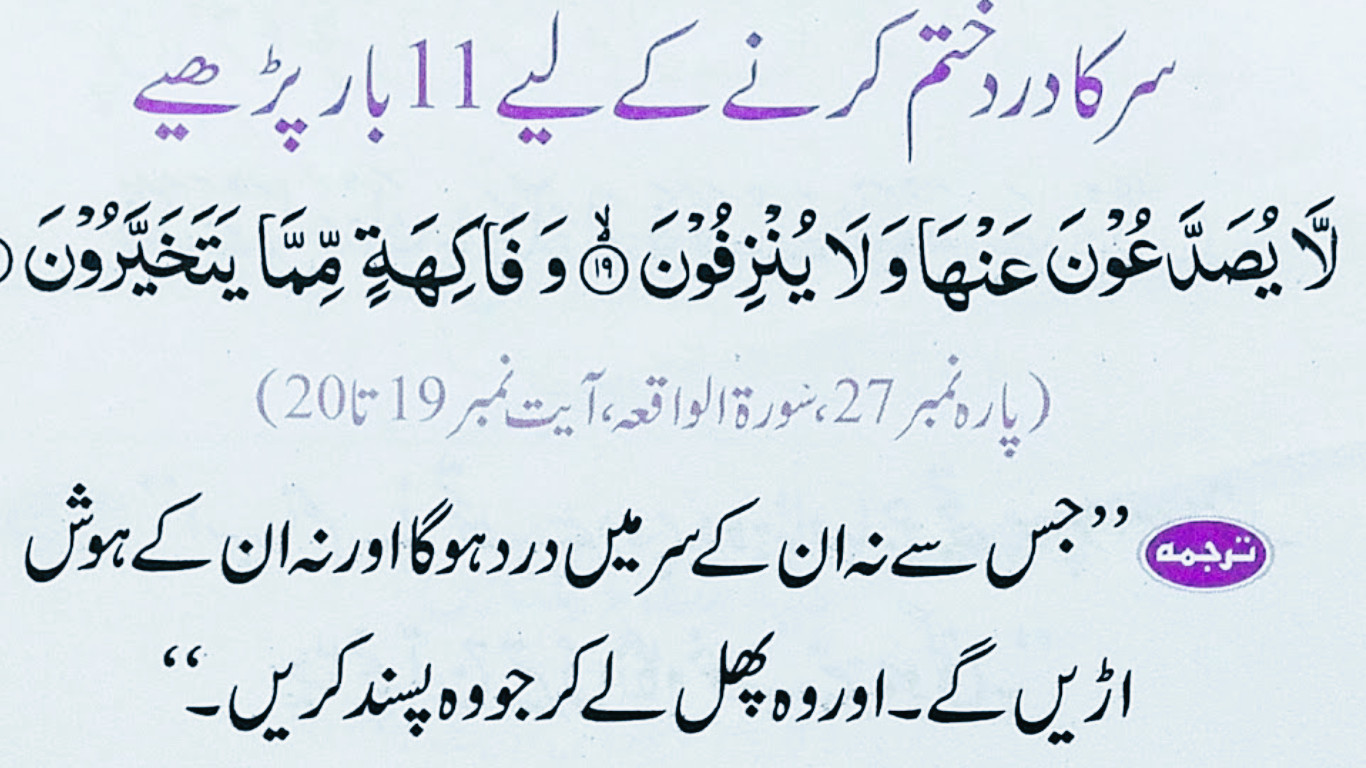Introduction
Hook: Begin with a fact or question that leads the reader to wonder, i.e., “Have you ever had a headache so bad that it is hard to focus? Islamic healing methods can help!”
Elaborate briefly on the topic of headache (sir dard) and Islamic prayers and how they are healing and soothing.
Explain the role of duas in Islam to heal physical illness.
Understanding the Importance of Duas in Healing
What are Duas?: Define duas as prayers or requests made to Allah seeking assistance, guidance, or healing.
The Role of Duas in Islam: Describe how duas are a means of seeking out Allah and requesting protection, healing, and relief from physical or emotional pain.
Dua for Healing: General reference to duas for different types of pain (including headache).
Sure! Below is a human-written explanation covering the points you’ve requested about Sir Dard Ki Dua, Sir Dard Ka Ilaj, and related topics:
1. Sir Dard Ki Dua in the Qur’an

While the Qur’an doesn’t have a specific verse explicitly dedicated to headaches (Sir Dard), Islamic teachings encourage us to turn to Allah through sir dard ki dua (supplications) for healing from any illness or pain, including headaches.
A general dua for healing from any physical discomfort, which can be applied to headaches, is:
اللهم إني أعوذ بك من البرص، والجنون، والجذام، ومن سيء الأسقام
“Allahumma inni a’udhu bika min al-barsi wal-junoon wal-judhaami wa min sa’i as-saqqam.”
Translation: “O Allah, I seek refuge in You from leprosy, insanity, and the evil of diseases.”
This dua, which was taught by the Prophet Muhammad (PBUH), can be recited when you are experiencing pain or illness, asking Allah for relief and healing.
2. Sir Dard Ka Ilaj (Headache Treatment in Islam)
In Islam, healing comes from both spiritual and practical means. While duas like the one above offer spiritual healing, there are also practical ways recommended by the Prophet Muhammad (PBUH) for relieving headaches:
- Ruqyah (Spiritual Healing): Reciting specific verses from the Qur’an, such as Surah Al-Fatiha, Surah Al-Ikhlas, and Surah Al-Baqarah, can bring comfort and spiritual relief. These verses have powerful blessings that can help alleviate pain.
- Using Oil or Balm: According to some traditions, using black seed oil (Nigella Sativa) has been known to relieve headaches and is considered a blessed remedy. The Prophet Muhammad (PBUH) said that “black seed is a cure for every illness except death” (Sahih Bukhari).
- Avoiding Stress and Staying Hydrated: The Prophet Muhammad (PBUH) emphasized the importance of moderation and taking care of one’s body. Being mindful of your hydration, nutrition, and rest can be key in preventing and alleviating headaches.
3. Sir Dard Ki Dua in English
The dua for headache relief in English can be translated as follows:
“O Allah, I seek refuge in You from leprosy, insanity, and the evil of diseases.”
It’s important to note that while the translation is helpful for understanding, reciting it in Arabic is considered more powerful and is traditionally how it’s passed down.
4. Sir Dard Ki Dua in Urdu
In Urdu, the dua for headache relief would be:
اللهم إني أعوذ بك من البرص، والجنون، والجذام، ومن سيء الأسقام
“Allahumma inni a’udhu bika min al-barsi wal-junoon wal-judhaami wa min sa’i as-saqqam.”
This dua can be recited whenever you feel the onset of a headache or any type of illness, asking for Allah’s mercy and relief. It’s a form of seeking help directly from the Creator, relying on His power to heal.
5. Adhay Sir Dard Ki Dua (Half Headache Dua)
If you experience only a partial headache, or “adhay sir dard,” the same duas can be applied. A headache doesn’t need to be fully intense for you to seek Allah’s assistance. The key is to make the supplication with sincerity and ask for Allah’s intervention in healing you, regardless of the severity of the pain.
In addition to reciting the above dua, the Prophet Muhammad (PBUH) recommended using practical methods like cupping therapy (hijama), which can help relieve tension in the head and neck, often the root cause of partial or full headaches.
Sir Dard ka kion nikahta hai?

Give a short history about what usually brings about headaches (e.g., tension, dehydration, stress).
See the impact of headaches on daily life and the necessity to treat them.
Shift to how Islamic interventions, like duas, can be incorporated into healing.
Sir Dard Ki Dua to Relieve Headaches
The Dua: Cite the particular dua for headache (e.g., the hadith or Qur’an dua).
For example:
اللهم إني أعوذ بك من البرص، والجنون، والجذام، ومن سيء الأسقام
O Allah, I take refuge in You from leprosy, madness, and evil of diseases.
Arabic Text with Transliteration: Give the Arabic text and its transliteration for better readability.
Explanation of the Dua: Describe the meaning and significance of the words used in the dua.
When to recite the Dua: Share when and how often the dua should be recited for proper relief.
Other Islamic Remedies for Headache
Ruqyah (Spiritual Healing): Describe briefly how recitation of Qur’anic verses like Surah Al-Fatiha or Surah Al-Ikhlas can heal.
Prophet Muhammad’s (PBUH) Teachings on Pain Relief: Offer any specific advice from Hadith on how to manage bodily pain, e.g., headaches.
The Place of Patience and Trust in Allah: Emphasize that requesting help through prayer also involves trust in Allah’s decree.
Medical and Lifestyle Advice to Accompany Dua
Hydration and Nutrition: Provide simple, achievable advice like drink plenty of water, eat well-balanced meals, and don’t worry.
Rest and Relaxation: Highlight the necessity of adequate rest and the removal of headache-causing stimuli.
Consulting a Doctor: Acknowledge that while Islamic remedies work, a person should consult a doctor in case of persistent or severe pain.
Spiritual Healing of Headaches:
The efficiency of Rohani Ilaj is such that spiritual remedies not only include physical problems but also headaches. Specific supplications can be performed for seeking relief from headaches(sir dard ki dua), along with prayers and reciting specific Quranic verses:
Surah Al-Falaq and Surah An-Nas: These chapters, if recited on a regular basis, as taught by the Prophet S.A.W., form a protective shield (against various afflictions such as headaches.
Moavazatain, commonly known as Qul Howalla, Qul Aozo bi Rabbinnas, and Qul Aozo bir Rabbil Falak: These can be read both in the morning and evening for protection from harms, following the practice of the Prophet.
These spiritual practices must be free from all kinds of hypocrisy and should be carried out with faith and belief in the almighty healing power of the Quran. Yet, it has to be fully elucidated that Rohani Ilaj supplements and does not replace a qualified professional opinion. Indeed, such headaches, if persistent or serious, are definitely in need of consultation with healthcare professionals. Tapping into the magic of prayer, mindfulness, and holistic wellness opens paths to an enhanced quality of life.
Understanding the Prayer for Headache Relief
1.1 Origins and Historical Significance:
Elaborate on the source of origin behind “Sar Dard ki Dua” and its historical background.
1.2 Significance of Reciting the Prayer:
Discuss the ideology behind this prayer being recited and how it is believed to bring comfort from headaches.
Section 2: The Practice of Reciting the Prayer
2.1 Procedure:
Know the step-by-step process one goes through when reciting the prayer for headache relief.
2.2 Frequency:
Know how frequently this prayer is recommended along with related customs/traditions.
Searching for Possible Benefits
3.1 Power of Faith:
Understand the rationale behind faith and belief in the efficacy of the prayer.
3.2 Psychological and Emotional Relief:
Elaborate on how this prayer has been recited with the result of soothing and tranquilizing emotions, thereby affecting headache relief positively.
3.3 Encouragement of Mindfulness:
Understand how such a prayer can result in bringing focus to an individual’s mind and relaxation to the mind that may help alleviate headaches.
Personal Observations and Testimonials
4.1 Real-Life Experiences:
Tell stories of how some people got relief from headaches by doing the prayer.
4.2 Testimonials:
First-hand accounts of those people who came out of comfort through the utterance of the prayer.
Additional Tips for Headache Relief
5.1 Holistic Approaches:
Research and discuss complementary techniques, including methods of relaxation and a regimen of good living that could help promote relief better.
5.2 Consultation with Medical Professionals:
Counsel on seeking medical opinion in cases of chronic or severest headaches.
conclusion
While headaches can be a result of various physical causes such as tension, stress, dehydration, or even medical conditions, turning to Allah with a sincere heart through sir dard ki dua is a recommended way to seek relief. The Prophet’s teachings offer both spiritual and practical remedies for ailments like headaches. Combining duas with proper self-care — staying hydrated, avoiding stress, and getting enough rest — can be a holistic way to manage and prevent sir dard ki dua (headaches).
Always remember that Islam teaches us to take action and seek cures, whether through faith, medicine, or lifestyle changes. If your headaches persist, seeking medical advice is important in addition to making dua

AoA, my name is Abd al-Rahman, and my vision is to spread the knowledge of the Quran to everyone. I am proud and tall while standing as your trusted mentor on the journey of learning and memorizing the Holy Quran. I, along with a committed team of Islamic teachers, am bound to provide an easy online facility for Islamic studies and Hifz programs.

